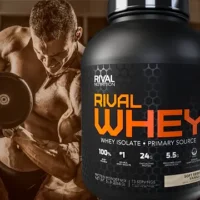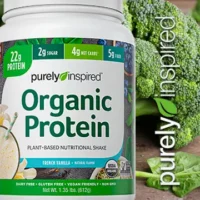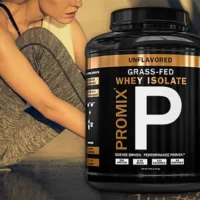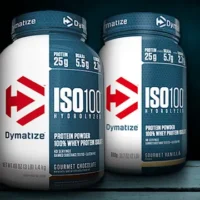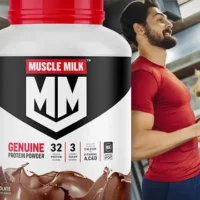BACK
Protein Price - What are you paying for?
Why are some supplements so much more expensive than others? How do you know you’re getting value for money?
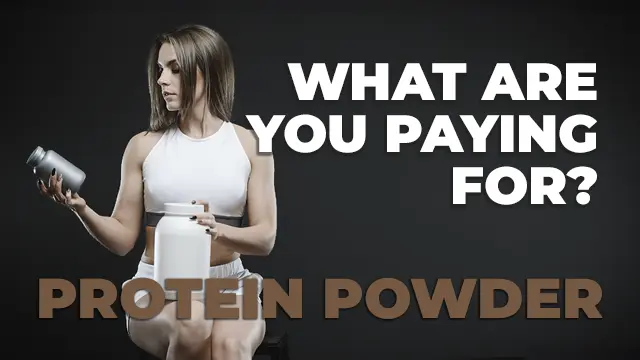
The price range of protein powder can be as big as the protein choices available. Why are some supplements so much more expensive than others? And how do you know you’re getting value for money?
We break down the process for you, to help make your choice easier when it comes to buying a protein powder.
There are also different types of protein powder, which adds another layer of confusion to the manufacturing process. Here are the common methods for creating whey, rice, and pea protein powders.
We break down the process for you, to help make your choice easier when it comes to buying a protein powder.
There are also different types of protein powder, which adds another layer of confusion to the manufacturing process. Here are the common methods for creating whey, rice, and pea protein powders.
WHEY PROTEIN POWDER
Whey is a by-product of the cheese-making industry. The whey is drained off and filtered to become whey protein concentrate and is commonly filtered further to become a protein isolate. It is then dried to become a powder, before being mixed with other flavors, sweeteners, and ingredients.

The filtration process plays a large role in the cost of the final product. There are two main methods: ion exchange or microfiltration.
Microfiltration or membrane filtration uses filters with microscopic holes which physically separate the protein from the whey. It doesn’t use heat or chemicals, and it protects the nature of the protein, causing none of the damage that ion exchange does.
This is a more expensive process, but it does retain more of the nutrients from the whey and yields a better-quality protein.
This is a more expensive process, but it does retain more of the nutrients from the whey and yields a better-quality protein.
Ion exchange typically uses hydrochloric acid and sodium hydroxide in order to isolate the protein from the whey. This is a cheaper method of concentrating the protein, but it can also cause damage to the amino acids during the process. The denaturing of proteins is thought to affect the level and quality of antioxidants, protein digestion, salt, and calcium.
Ion exchange is a cheaper procession option and affects the pH levels of the protein.
Ion exchange is a cheaper procession option and affects the pH levels of the protein.
Other considerations with whey production is the source of the dairy. Grass-fed cows eat exclusively grass and other greens, whereas pasture-raised or grain fed are likely to consume soy and other genetically modified grains. It is also likely that grass-fed cows are given less growth-enhancing hormones, although this isn’t guaranteed.
Milk sourced from grass-fed cows will generally have a better nutrient profile, but most of this is filtered out in the concentration of the whey. Whey that is sourced from grass-fed cows is likely to come with a higher price point, due to the higher quality of milk produced.
Milk sourced from grass-fed cows will generally have a better nutrient profile, but most of this is filtered out in the concentration of the whey. Whey that is sourced from grass-fed cows is likely to come with a higher price point, due to the higher quality of milk produced.
PLANT PROTEIN POWDER
Like whey protein, there are various different ways to process plant proteins such as rice or pea to create protein powder.
One common method is with the use of hexane, derived from petroleum. Hexane is a cheap and efficient way to separate the protein from the rest of the plant matter. However, there are question marks around the safety of hexane, the biggest issue being in relation to its neurotoxicity.
Heat is another process used, which is much safer than hexane, although may also destroy many of the nutrients found in the plant.
A higher quality plant protein will use natural enzymes, which are added to the sprouted plant seeds in order to separate the protein. This method is more time-consuming and expensive than the other two processes, and this is reflected in the price point of the protein powder. It does tend to produce a higher quality protein, which is worth considering when you fork out your hard-earned cash.
One common method is with the use of hexane, derived from petroleum. Hexane is a cheap and efficient way to separate the protein from the rest of the plant matter. However, there are question marks around the safety of hexane, the biggest issue being in relation to its neurotoxicity.
Heat is another process used, which is much safer than hexane, although may also destroy many of the nutrients found in the plant.
A higher quality plant protein will use natural enzymes, which are added to the sprouted plant seeds in order to separate the protein. This method is more time-consuming and expensive than the other two processes, and this is reflected in the price point of the protein powder. It does tend to produce a higher quality protein, which is worth considering when you fork out your hard-earned cash.
OTHER INGREDIENTS
The cost of protein isn’t just based on its manufacturing methods. A company’s choice of sweeteners, flavoring, and other ingredients will all have an effect on the quality and price of the final product.
Sweeteners such as stevia or xylitol are pricier than acesulfame, aspartame, or sucralose, although the latter options are more likely linked with unhealthy side effects. Similarly, artificial flavors are more cost-effective than natural ones, but it might make you think twice, knowing that imitation vanilla flavor comes from beaver glands or cow poop!
Protein powders often have other ingredients added to benefit the quality of the protein and the consumer. For instance, digestive enzymes are often included to maximize protein digestion, and other companies add probiotics for gut health, or single amino acids to enhance the function of the product.
All these additional ingredients come with a price tag, and it’s worth weighing up the benefits versus the cost.
Sweeteners such as stevia or xylitol are pricier than acesulfame, aspartame, or sucralose, although the latter options are more likely linked with unhealthy side effects. Similarly, artificial flavors are more cost-effective than natural ones, but it might make you think twice, knowing that imitation vanilla flavor comes from beaver glands or cow poop!
Protein powders often have other ingredients added to benefit the quality of the protein and the consumer. For instance, digestive enzymes are often included to maximize protein digestion, and other companies add probiotics for gut health, or single amino acids to enhance the function of the product.
All these additional ingredients come with a price tag, and it’s worth weighing up the benefits versus the cost.
PROTEIN AIN’T JUST PROTEIN
From the original source of milk or plant to the processing methods and additional ingredients, what makes a protein is highly variable.
It’s worth finding out how your protein is made, and having a thorough look at the ingredients list. For a good quality protein, it’s worth the effort and the cost!
It’s worth finding out how your protein is made, and having a thorough look at the ingredients list. For a good quality protein, it’s worth the effort and the cost!
Popular Reviews
The content on this site has not been written, reviewed or endorsed by a medical professional. We assume no liability for the misuse of supplements and recommend you review the label of any product, as well as consulting with your health care professional.
We are a participant in the Amazon Services LLC Associates Program, an affiliate advertising program designed to provide a means for us to earn fees by linking to Amazon.com and affiliated sites.
We are a participant in the Amazon Services LLC Associates Program, an affiliate advertising program designed to provide a means for us to earn fees by linking to Amazon.com and affiliated sites.
© 2025 ProteinPowder.com
